

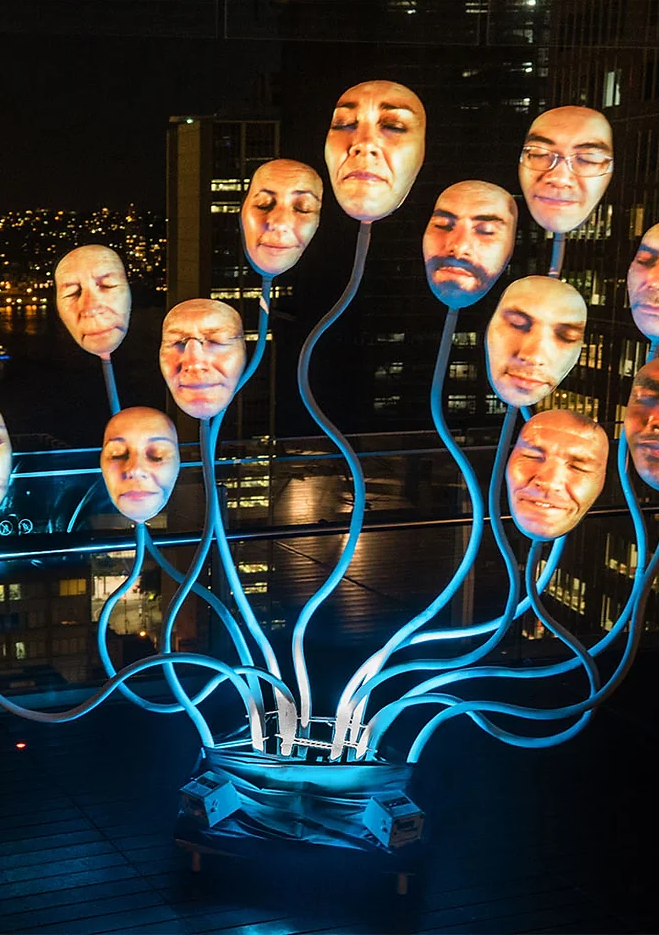
Synarcade Audio-Visuals
The Museum of Faces
Designed to record and tell the stories of the local community and beyond, this futuristic invention by Synarcade Audio-Visuals is an astonishing communal forum of the city at a unique moment of growth and change.
Visitors are invited to approach the work and press a glowing button to make the faces come alive and speak. Then, they can step into a special Video Capture Booth and contribute their own face, voice, and story to become part of the ever-changing Museum.
The Museum of Faces is based on Synarcade Audio-Visuals’ award-winning invention, The Lumiphonic Creature Choir, an eerie mechanical choir that can sing together in unison, beatbox, or recite poetry at the touch of a button. The Lumiphonic Creature Choir has performed to sell-out audiences in Melbourne, Croatia, New York, and at TEDxSydney 2018.
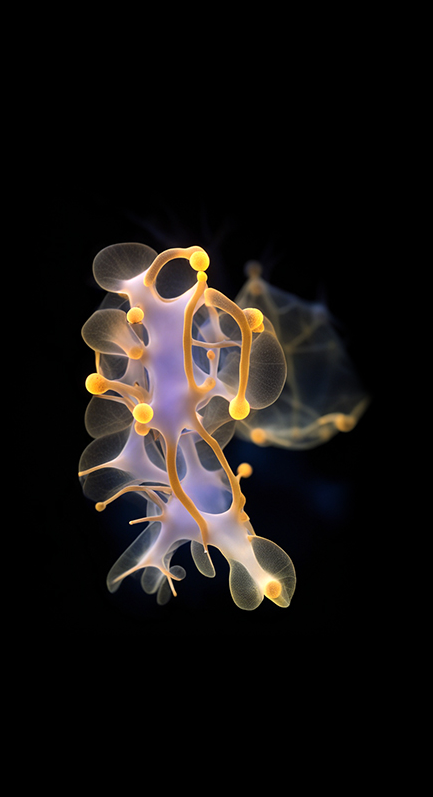
Memo Akten and Katie Peyton Hofstadter
Embodied Simulation
‘Embodied Simulation’ is a multiscreen video and sound installation that aims to provoke and nurture strong connections to the global ecosystems of which we are a part. The work combines artificial intelligence with dance and research from neuroscience to create an immersive, embodied experience, extending the viewer’s bodily perception beyond the skin, and into the environment.
The cognitive phenomenon of embodied simulation (an evolved and refined version of ‘mirror neurons’ theory) refers to the way we feel and embody the movement of others, as if they are happening in our own bodies. The brain of an observer unconsciously mirrors the movements of others, all the way through to the planning and simulating execution of the movements in their own body. This can even be seen in situations such as embodying and ‘feeling’ the movement of fabric blowing in the wind. As Vittorio Gallese writes, “By means of a shared neural state realized in two different bodies that nevertheless obey to the same functional rules, the ‘objectual other’ becomes ‘another self’.”
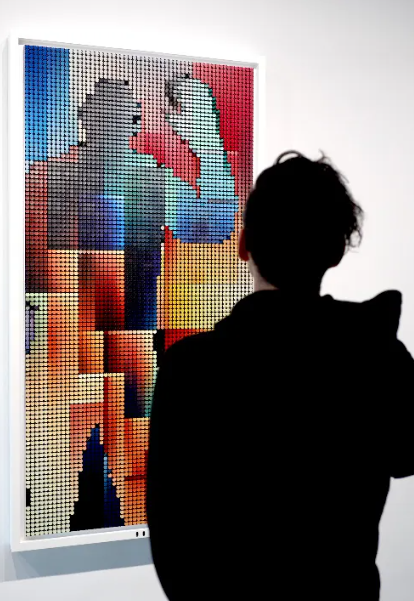
BREAKFAST
Interwoven Existence
The artwork draws inspiration from the concept that individual human beings are interconnected rather than isolated. It is a visual representation of collective strength and diversity. The artwork is divided into sections of various sizes and colors, each symbolizing the diverse origins of people around the world.
As viewers approach the artwork, it becomes interactive, reflecting their image across the piece. Upon stepping away, a recording of their interaction is placed into one of the sections, symbolizing the randomness of a given person’s birthplace and socioeconomic position. Subsequently, recorded video clips of previous viewers are displayed in adjacent sections, integrating new viewers into the existing community of participants.

QUBIT AI – International Electronic Language Festival – Art and Technology
QUBIT AI | quantum & synthetic ai
Electronic Language International Festival
July 3rd to August 25th
Tuesday to Sunday, 10am – 8pm
FIESP Cultural Center
Design: André Lenz
Image: Iskarioto Dystopian AI Films – Athena
QUBIT AI
In its 25 years of existence, the International Electronic Language Festival (FILE) is an internationally renowned Brazilian project that since 2000 has explored the intersection between art and technology. With more than two decades of history, the festival stands out for fostering exhibition spaces and debate about artistic innovations driven by disruptive and innovative technologies, inviting the public to get involved with experimental forms of art that challenge the boundaries of conventionality. Currently, two of these technologies stand out in the contemporary scenario: the accelerated development of quantum computing and artificial intelligence corroborated by synthetic data.
Quantum computing, an emerging revolution in the technological field, offers a new range of creative possibilities for contemporary artists. This new era allows the exploration of unprecedented frontiers through a new computational format that consists mainly of quantum superposition and entanglement, a new field of exploration for synthetic computer science, as well as for the arts in general; on the other hand, artificial intelligence, fueled by synthetic data, offers artists a new way of making and understanding art, opening up space for new forms, concepts and artistic expressions.
Entitled QUBIT AI, the exhibition delves into this unexplored territory presenting a selection of works of art resulting from the connection between artistic creation and technology, proposing a theoretical reflection on what the interrelationship between quantum computers and synthetic artificial intelligence will be.
Visitors will be invited to experience immersive installations, experimental videos, digital sculptures and other forms of interactive art, which intertwine reality and imagination. The exhibition encourages reflections on the influence of technology on art and contemporary society, while at the same time providing an environment to compare already established technological arts (analog and digital) with the possible futures of art in the synthetic era, enhanced by quantum computing. The QUBIT AI exhibition at FILE SP 2024 transcends the mere presentation of works of art; it is a journey to the limits of human creativity, driven by the convergence of art, science and technology.
Ricardo Barreto and Paula Perissinotto
co-organizers and curators of FILE
International Electronic Language Festival

QUBIT AI: Camila Magrane
The Witness
FILE 2024 | Installations
International Electronic Language Festival
Image activated by augmented reality, where 3D animated subjects and scenarios are integrated into a physical photograph. Inspired by the work of Carl Jung, the image is part of a larger series that explores themes such as identity, introspection and transformation. Through AR, game elements were introduced into the piece, offering virtual content unlockable through interactions.
Bio
Camila Magrane is a Venezuelan-American visual artist known for her augmented reality images, integrating 3D animated scenes and subjects into physical photographs. With experience in video game development and a passion for analog photography, she explores the dialogue between the virtual and physical worlds. Magrane’s images are inspired by surrealist compositions and reference the graphic hyperrealism of contemporary video game design.
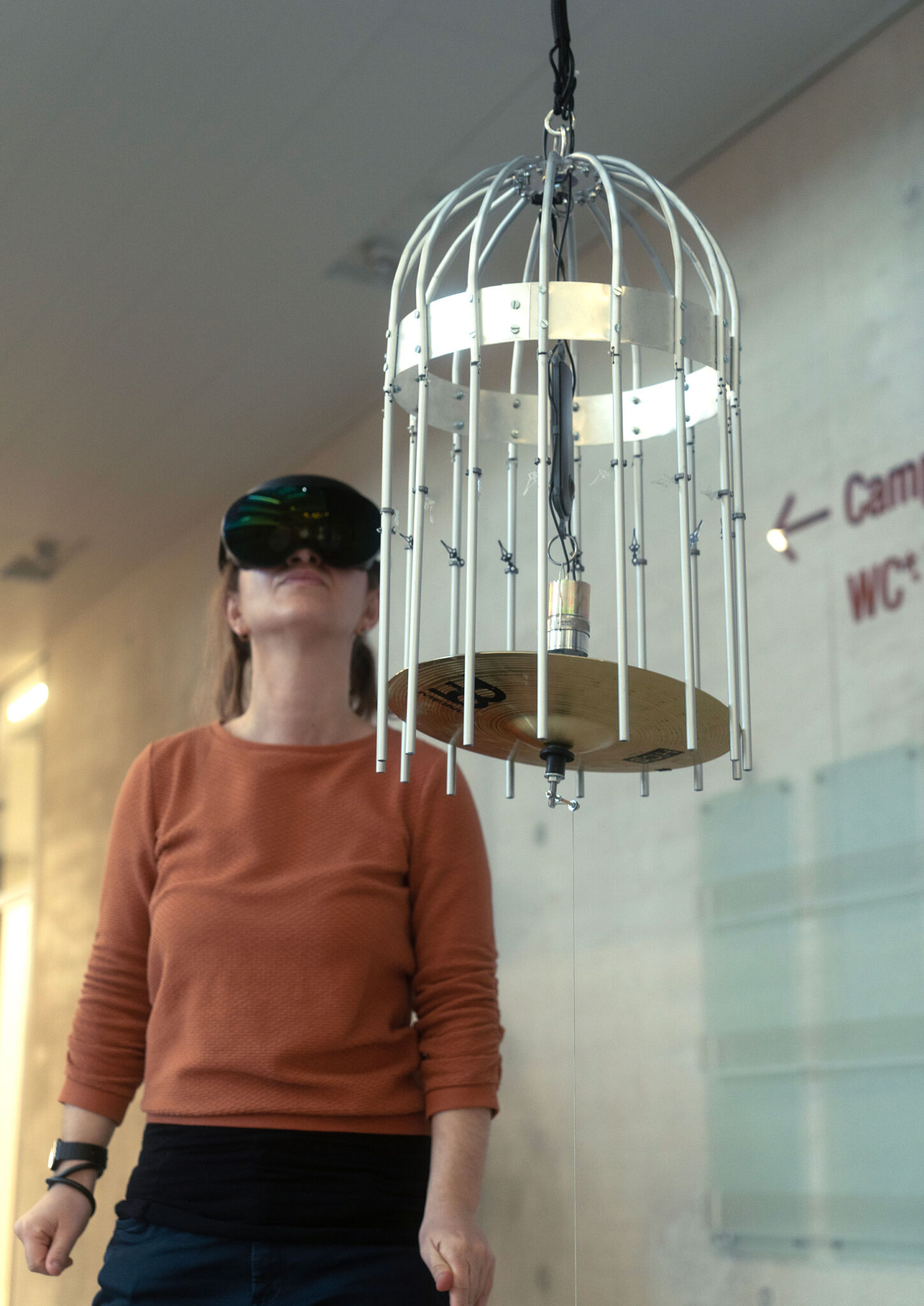
QUBIT AI: Anna Vasof & VRinMotion Team
The Cage of Time
FILE 2024 | Installations
International Electronic Language Festival
Interactive installation that presents a kinetic instrument object and virtual reality glasses, functioning as a device that animates the illusion of the passage of time in virtual space. In the fabric of existence, time weaves a cage around our ephemeral moments, limiting our perceptions of the past, present and future. By embracing this paradox, we may discover that the cage of time becomes the crucible where the alchemy of experience transforms our understanding of existence.
Bio
Anna Vasof is a multi-award-winning artist who focuses on filmmaking, short videos, and time-based sculptures. VRinMotion is an artistic research project based at St. Pölten University of Applied Sciences in Austria that investigates how features of stop-motion animation and motion capture can be combined with virtual reality to enrich current artistic discourse.
Credits
VRinMotion Team: Franziska Bruckner, Christoph Schmid, Clemens Gürtler, Matthias Husinsky, Christian Munk, Julian Salhofer, Stefan Nebel, Vrääth Öhner.
Concept by: Anna Vasof.
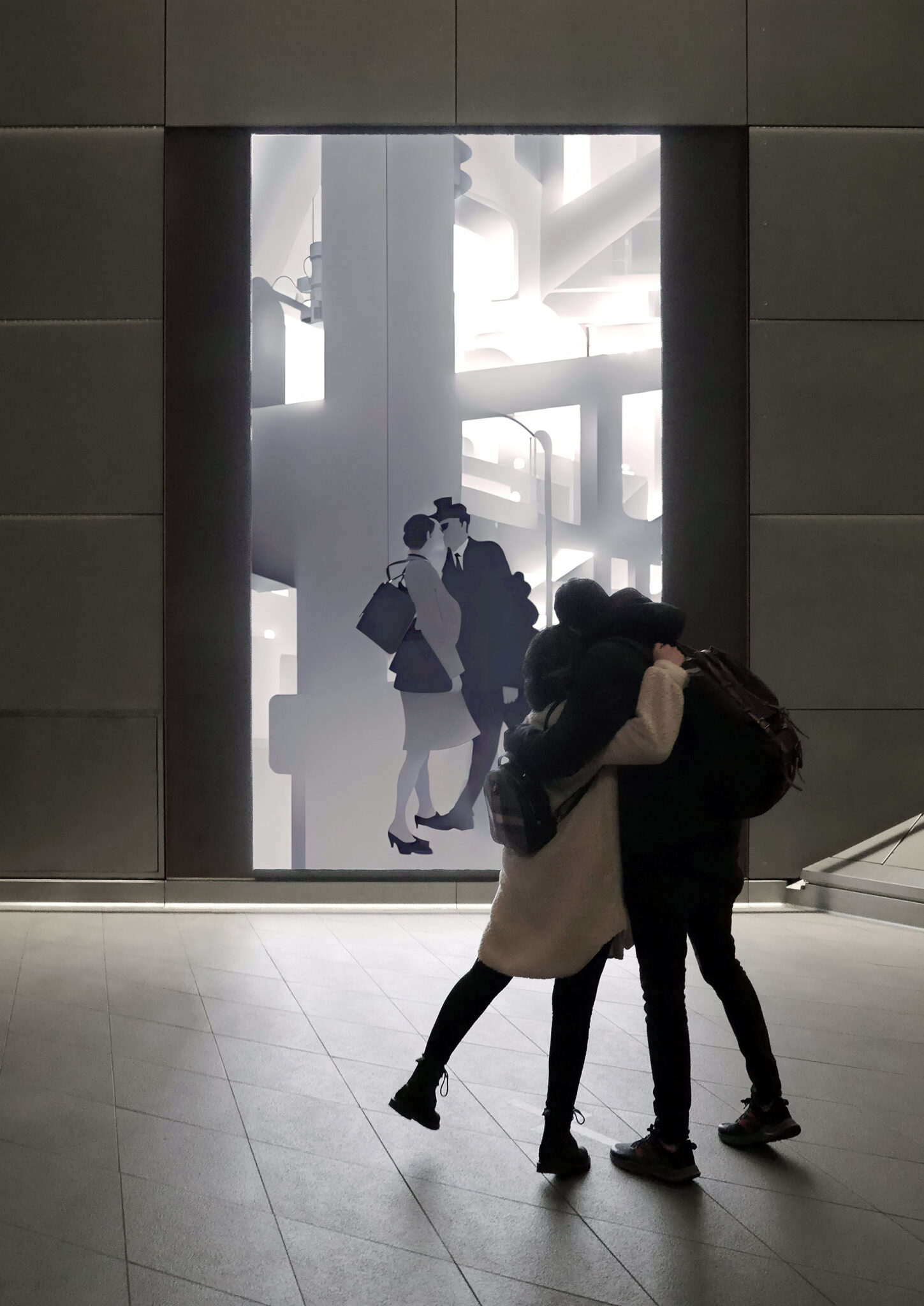
QUBIT AI: Matthias Oostrik
The Forgettable Art Machine
FILE 2024 | Installations
International Electronic Language Festival
The Forgettable Art Machine is an artificial intelligence-driven video installation. When facing the panel, the public has their image captured, starting a cycle of analysis, creation and destruction. From this data, a composite emerges, slowly transforming the visitors’ image into a generative visualization. Once the cycle is complete, the composition is deleted, waiting for a new audience to be captured.
Bio
Matthias Oostrik works at the intersection of digital art, installation art, cinema and architecture. His works establish unpredictable relationships between people and their surroundings. Using digital technology, his installations allow visitors to reshape their environment and their relationships with each other. Oostrik collaborates with renowned professionals and, above all, with his audience, who often become an integral part of his work.
Credits
Co-production: Zester
IA Music: Than van Nispen

QUBIT AI: Lukas Radavicius
Architecture Concepts Created by AI – Can AI Become an Architect?
FILE 2024 | Architectural Synthetics
International Electronic Language Festival
Lukas Radavicius – Architecture Concepts Created by AI: Can AI Become an Architect? – Lithuania
In recent years, artificial intelligence technologies have advanced significantly in the art world, becoming a vital tool for artists in a variety of disciplines, including architecture. Lukas Radavicius has created videos demonstrating the current capabilities of AI in architecture, showcasing innovative designs that offer insights into the potential of AI to shape the future of architecture.
Bio
Lukas Radavicius, born in Kaunas, Lithuania, is a passionate visual artist who began his career in architecture before moving into graphic design and 3D graphics. With a degree in architecture from the Kaunas Academy of Art, he remains active in design-related fields while exploring the fascinating world of AI art in his spare time.
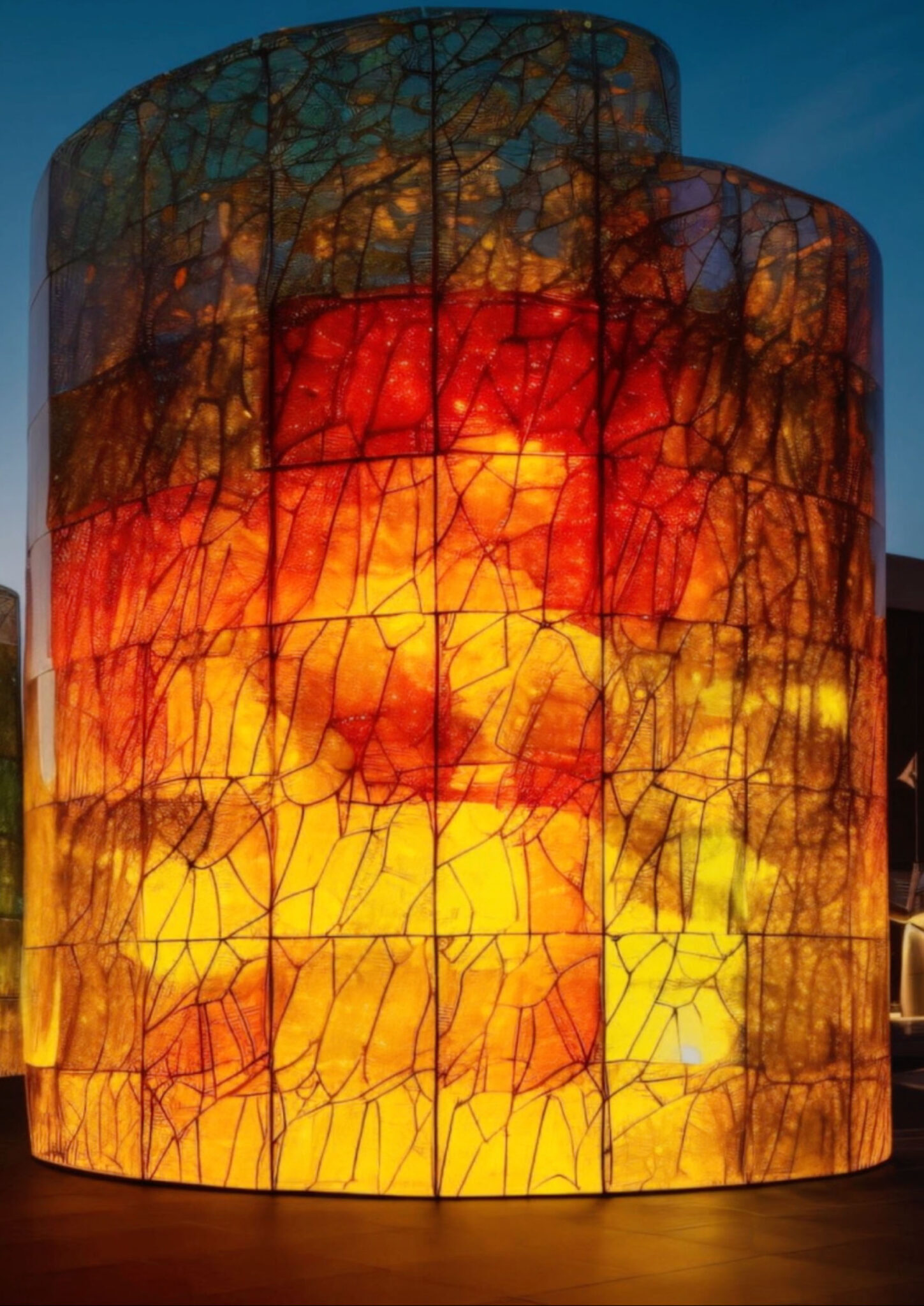
QUBIT AI: Lukas Radavicius
Architecture Concepts Created by AI: Artificial Intelligence Modern Architecture
FILE 2024 | Architectural Synthetics
International Electronic Language Festival
Lukas Radavicius – Architecture Concepts Created by AI: Artificial Intelligence Modern Architecture – Lithuania
In recent years, artificial intelligence technologies have advanced significantly in the art world, becoming a vital tool for artists in a variety of disciplines, including architecture. Lukas Radavicius has created videos demonstrating the current capabilities of AI in architecture, showcasing innovative designs that offer insights into the potential of AI to shape the future of architecture.
Bio
Lukas Radavicius, born in Kaunas, Lithuania, is a passionate visual artist who began his career in architecture before moving into graphic design and 3D graphics. With a degree in architecture from the Kaunas Academy of Art, he remains active in design-related fields while exploring the fascinating world of AI art in his spare time.
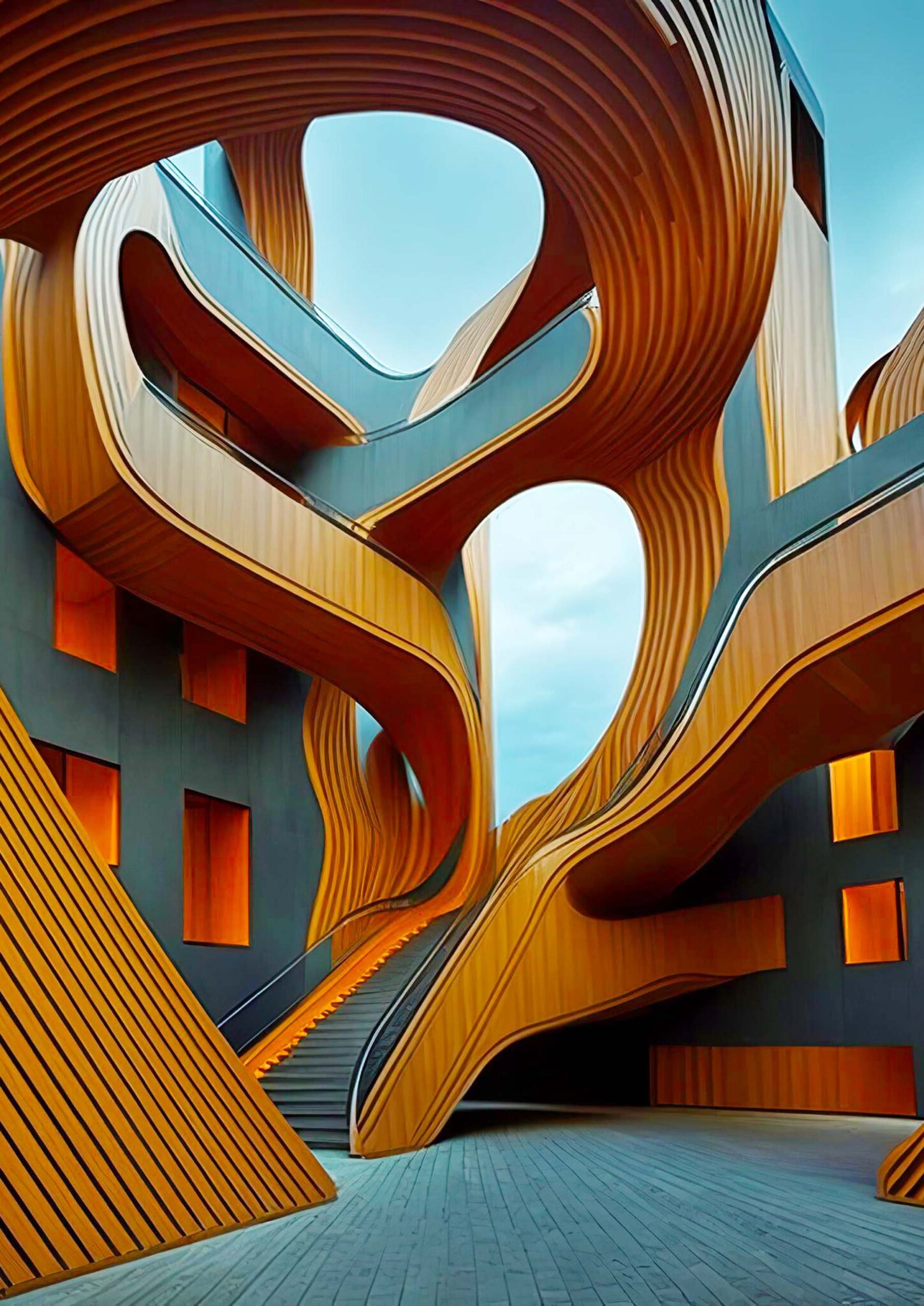
QUBIT AI: Lukas Radavicius
Architecture Concepts Created by AI: Architecture Concepts Made by AI
FILE 2024 | Architectural Synthetics
International Electronic Language Festival
Lukas Radavicius – Architecture Concepts Created by AI: Architecture Concepts Made by AI – Lithuania
In recent years, artificial intelligence technologies have advanced significantly in the art world, becoming a vital tool for artists in a variety of disciplines, including architecture. Lukas Radavicius has created videos demonstrating the current capabilities of AI in architecture, showcasing innovative designs that offer insights into the potential of AI to shape the future of architecture.
Bio
Lukas Radavicius, born in Kaunas, Lithuania, is a passionate visual artist who began his career in architecture before moving into graphic design and 3D graphics. With a degree in architecture from the Kaunas Academy of Art, he remains active in design-related fields while exploring the fascinating world of AI art in his spare time.
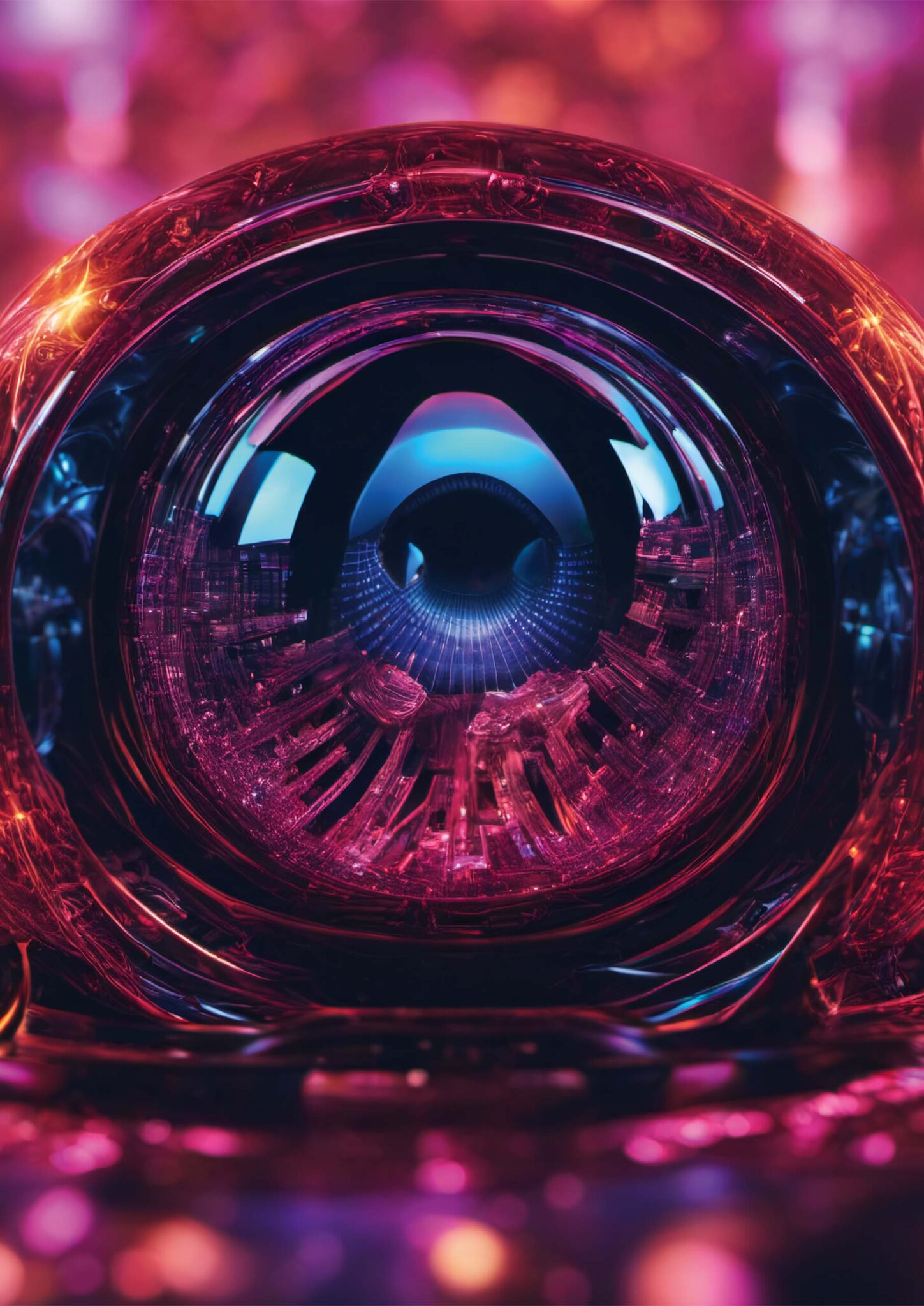
QUBIT AI: Valentin Rye
Around The Milky Way
FILE 2024 | Aesthetic Synthetics
International Electronic Language Festival
Valentin Rye – Around The Milky Way
In the distant future, several species inhabit the Milky Way. This scenario inspired the video, aiming to portray various forms of life and evoke a plausible atmosphere. Using images he created, the artist experimented with Stable Video Diffusion, a new video generation method. The objective was to expand the limits of this neural network and improve its output, resulting in the conception of this video.
Bio
Valentin Rye is a self-taught machine whisperer based in Copenhagen, deeply passionate about art, composition and the possibilities of technology. He has been involved in AI and neural network image manipulation since starting DeepDream in 2015. While his IT work lacks creativity, he indulges in digital arts during his free time, exploring graphics, web design, video, animation and experimentation with images.

QUBIT AI: Valentin Rye
Space Odyssey 2002
FILE 2024 | Aesthetic Synthetics
International Electronic Language Festival
Valentin Rye – A Space Odyssey 2002 – Denmark
This video offers a surrealist take on futuristic sci-fi concepts from the 60s and 70s. Imagine a future colonization of Mars where interior design is given an avant-garde twist. It was created by brainstorming visual ideas, generating countless images, refining the best ones and assembling them into clips. After careful selection, these clips have been organized into a cohesive timeline, accompanied by atmospheric music to enhance the overall experience.
Bio
Valentin Rye is a self-taught machine whisperer based in Copenhagen, deeply passionate about art, composition and the possibilities of technology. He has been involved in AI and neural network image manipulation since starting DeepDream in 2015. While his IT work lacks creativity, he indulges in digital arts during his free time, exploring graphics, web design, video, animation and experimentation with images.
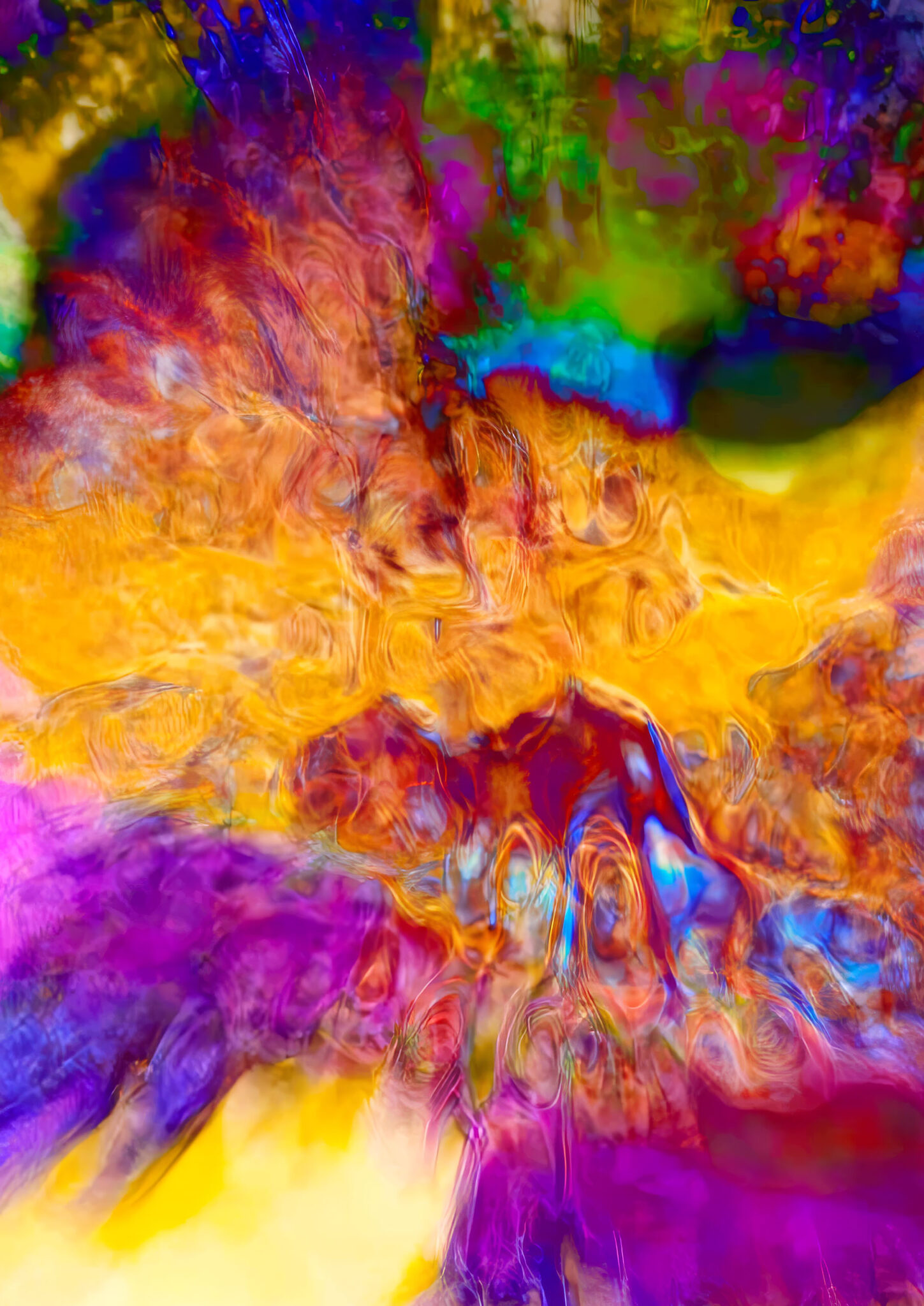
QUBIT AI: Michael Sadowski (aka derealizer)
Stealth Technology of Ancient, Cosmic Pantheons
FILE 2024 | Aesthetic Synthetics
International Electronic Language Festival
Michael Sadowski (aka derealizer) – Stealth Technology of Ancient, Cosmic Pantheons – Austria
An abstract painting in motion, with colors and shapes exploding and transforming to the rhythm of the music. The dynamic element is not trapped in a static image, but can unfold in time and space.
Bio
Using Stable Diffusion, a visual synthesizer, the artist turns fantasies into videos using just a PC, similar to the invention of printing 600 years ago. Exploring the interplay between software algorithms that create visual worlds and the artist’s mind guiding this process is incredibly exciting. Unlike traditional cinema, there is no ‘reality’ or humans involved, making it a satisfying medium for creating visual art.
Credits
Visuals: Michael Sadowski
Music: Stealth Technology of Ancient, Cosmic Pantheons by The Intangible
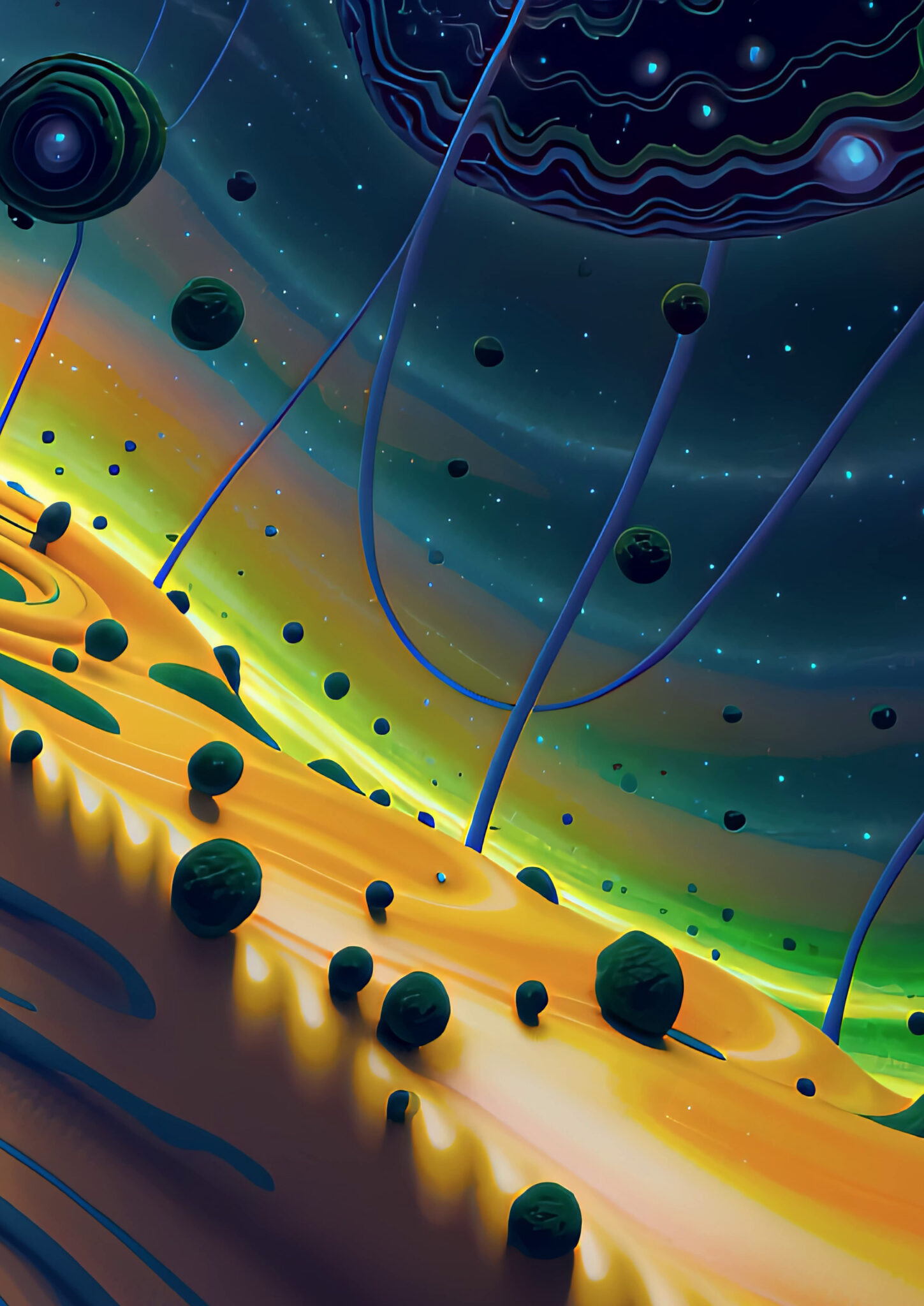
QUBIT AI: Michael Sadowski (aka derealizer)
Distortions of The Past
FILE 2024 | Aesthetic Synthetics
International Electronic Language Festival
Michael Sadowski (aka derealizer) – Distortions of The Past – Austria
Fractal elements that resemble cosmic structures evoke the illusion of traveling through a fractal universe. Rules, in the form of prompts, and chance interact with each other to create a visual fantasy.
Bio
Using Stable Diffusion, a visual synthesizer, the artist turns fantasies into videos using just a PC, similar to the invention of printing 600 years ago. Exploring the interplay between software algorithms that create visual worlds and the artist’s mind guiding this process is incredibly exciting. Unlike traditional cinema, there is no ‘reality’ or humans involved, making it a satisfying medium for creating visual art.
Credits
Visuals: Michael Sadowski
Music: Distortions of the Past by Dreamstate Logic

QUBIT AI: Gabi Szita (aka Sieve)
Schizophrenia
FILE 2024 | Aesthetic Synthetics
International Electronic Language Festival
Gabi Szita (aka Sieve) – Schizophrenia – Hungary and Iceland
This work delves into the artist’s deep interest in mental illness, especially schizophrenia, through images and sound.
Bio
Gabi Szita, aka Sieve, began generating images with Midjourney in December 2022. She has generated over 400,000 images to date using her private bot on Discord, specializing in wall-sized images available on demand. She can create complete exhibitions with her vast collection. In 2023, she started creating videos from some of her images, with Schizophrenia being one of her favorite videos.
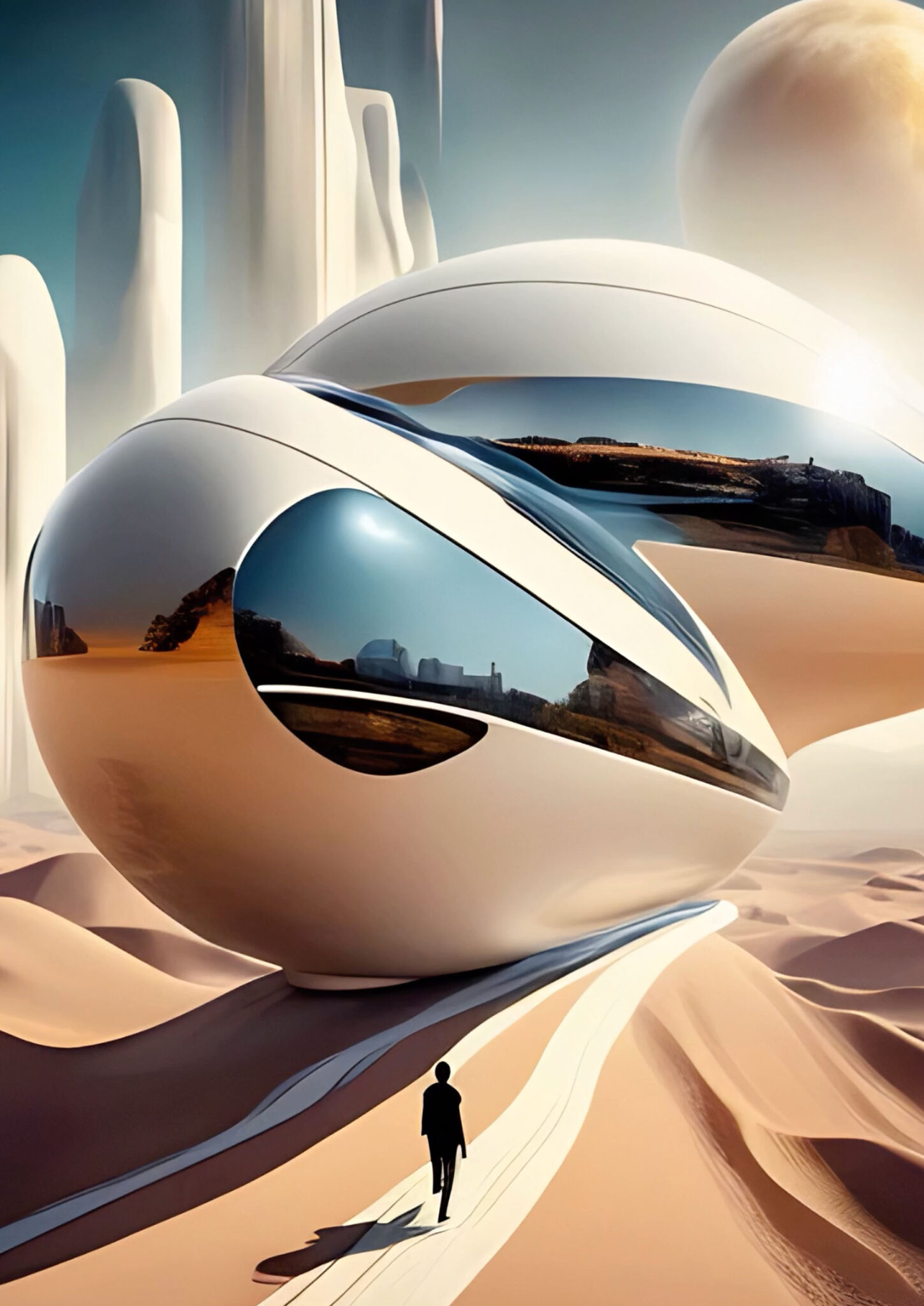
QUBIT AI: Dallaserra Maxime
Journey of Life
FILE 2024 | Aesthetic Synthetics
International Electronic Language Festival
Dallaserra Maxime – Journey of Life – France
Journey Of Life was triggered by the death of the artist’s grandmother. There is a message of resignation and optimism in the face of adversity in this work. However, he decided to portray the life of a young man in a futuristic city. The video is rich in details. The strength of artificial intelligence lies in its ability to allow this profusion of images, which would otherwise require the artist an incomparable amount of time to produce.
Bio
Maxime Dallaserra is an electronic music composer who always wanted to produce a comprehensive audiovisual work. In addition to his music creation activities, he managed to create live shows with video projections, accompanied by a team. At the same time, he began broadcasting his creations. With the arrival of artificial intelligence, he found ways to enhance and realize his artistic vision, leading to the creation of Journey of Life .

QUBIT AI: AESTHETIC SYNTHETIC FILE – São Paulo 2024 – Art and Technology
FILE 2024
QUBIT AI | quantum & synthetic ai
Electronic Language International Festival
July 3rd to August 25th
Tuesday to Sunday, 10am – 8pm
FIESP Cultural Center
Design: André Lenz
Image: Iskarioto Dystopian AI Films – Athena
QUBIT AI
In its 25 years of existence, the International Electronic Language Festival (FILE) is an internationally renowned Brazilian project that since 2000 has explored the intersection between art and technology. With more than two decades of history, the festival stands out for fostering exhibition spaces and debate about artistic innovations driven by disruptive and innovative technologies, inviting the public to get involved with experimental forms of art that challenge the boundaries of conventionality. Currently, two of these technologies stand out in the contemporary scenario: the accelerated development of quantum computing and artificial intelligence corroborated by synthetic data.
Quantum computing, an emerging revolution in the technological field, offers a new range of creative possibilities for contemporary artists. This new era allows the exploration of unprecedented frontiers through a new computational format that consists mainly of quantum superposition and entanglement, a new field of exploration for synthetic computer science, as well as for the arts in general; on the other hand, artificial intelligence, fueled by synthetic data, offers artists a new way of making and understanding art, opening up space for new forms, concepts and artistic expressions.
Entitled QUBIT AI, the exhibition delves into this unexplored territory presenting a selection of works of art resulting from the connection between artistic creation and technology, proposing a theoretical reflection on what the interrelationship between quantum computers and synthetic artificial intelligence will be.
Visitors will be invited to experience immersive installations, experimental videos, digital sculptures and other forms of interactive art, which intertwine reality and imagination. The exhibition encourages reflections on the influence of technology on art and contemporary society, while at the same time providing an environment to compare already established technological arts (analog and digital) with the possible futures of art in the synthetic era, enhanced by quantum computing. The QUBIT AI exhibition at FILE SP 2024 transcends the mere presentation of works of art; it is a journey to the limits of human creativity, driven by the convergence of art, science and technology.
Ricardo Barreto and Paula Perissinotto
co-organizers and curators of FILE
International Electronic Language Festival
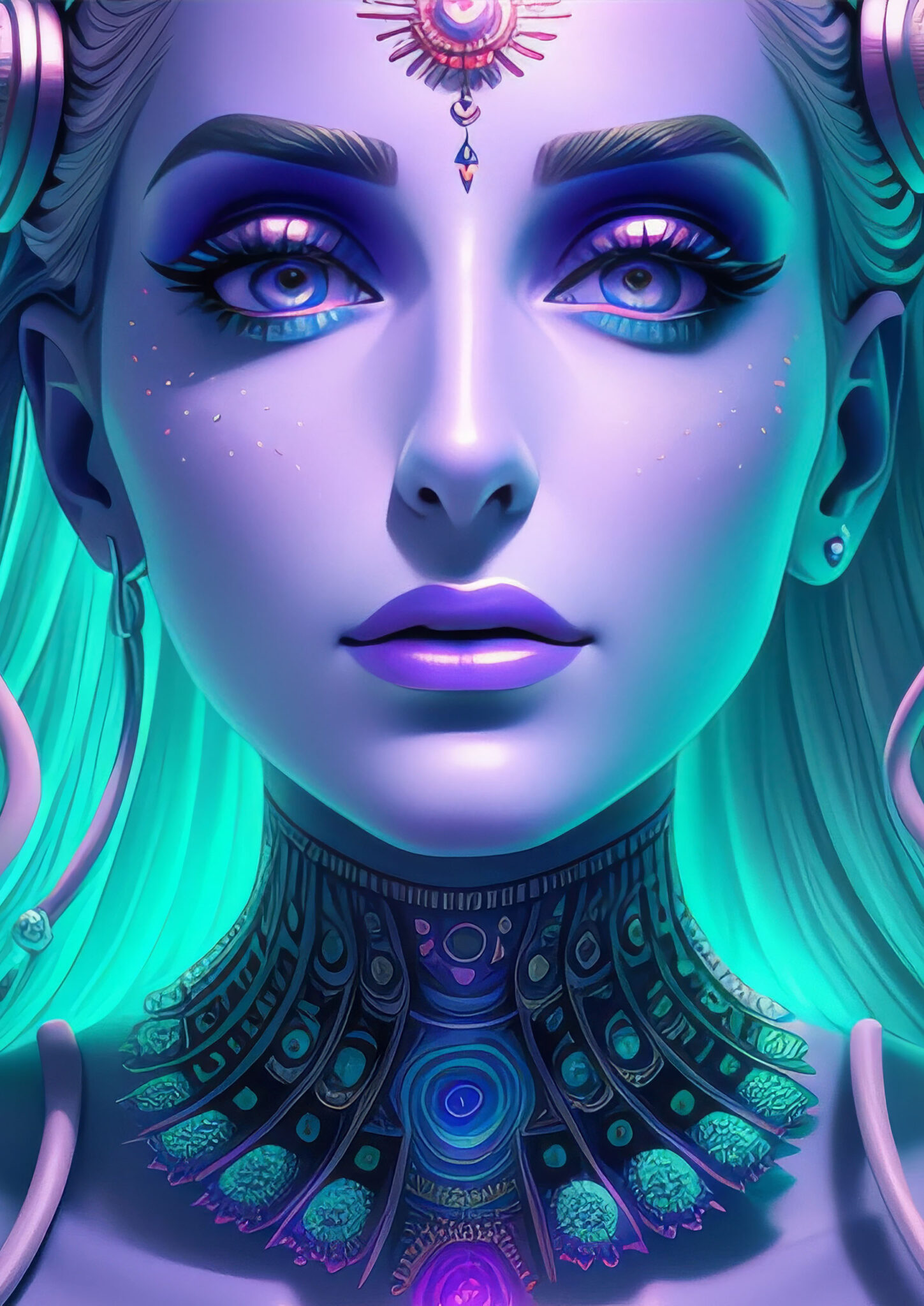
QUBIT AI: Verbo Pluriel (aka volt46) & XWave
Squid
FILE 2024 | Interator – Sound Synthetics
International Electronic Language Festival
Verbo Pluriel (aka volt46) & XWave – Calamar – United States and France
The Calamar music video is comprised of AI-generated clips that are sequenced and synchronized to create a hypnotic, ever-changing landscape.
Bio
Verbo Pluriel is an electronic music producer who has been active in the NFT scene since 2020 under the name volt46. X-Wave is also an NFT producer that trains its own AI models to generate collections. Although they never met in person, their participation in the web 3.0 art collective Based Ghouls led to their collaboration.
Credits
Music: Calamar (Kraken Mix) by Verbo Pluriel
Music Video: volt46
AI Video Generation: XWave
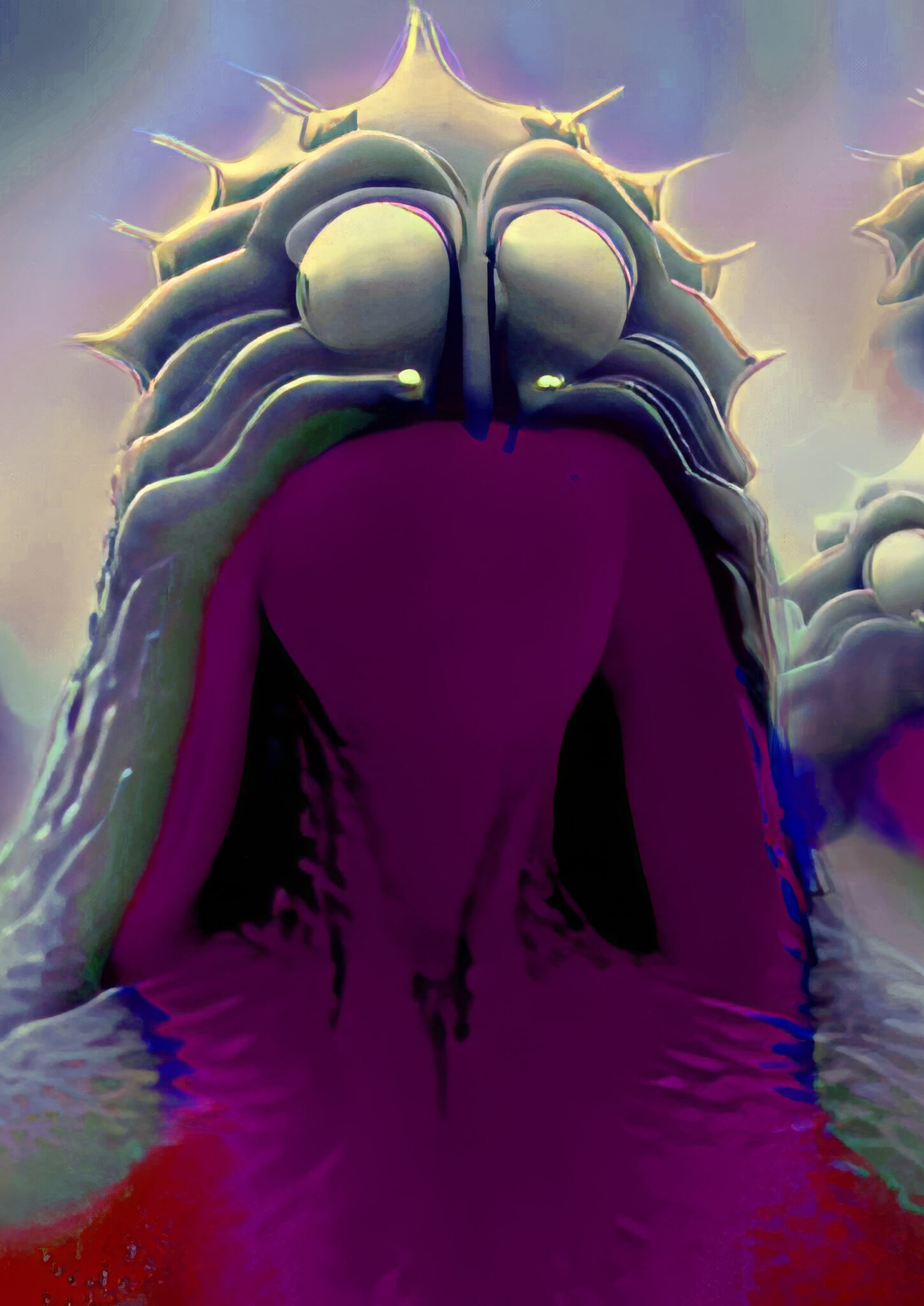
QUBIT AI: Michael Sadowski (aka derealizer)
Magic Drops
FILE 2024 | Interator – Sound Synthetics
International Electronic Language Festival
Michael Sadowski (aka derealizer) – Magic Drops – Austria
Moving abstract structures and grimacing masks, colors that change and pulse to the rhythm of the music create a psychedelic experience that embodies the spirit of Techno.
Bio
Using Stable Diffusion, a visual synthesizer, the artist turns fantasies into videos using just a PC, similar to the invention of printing 600 years ago. Exploring the interplay between software algorithms that create visual worlds and the artist’s mind guiding this process is incredibly exciting. Unlike traditional cinema, there is no ‘reality’ or humans involved, making it a satisfying medium for creating visual art.
Credits
Music: Chris Robert

QUBIT AI: Michael Sadowski (aka derealizer)
In Love
FILE 2024 | Interator – Sound Synthetics
International Electronic Language Festival
Michael Sadowski (aka derealizer) – In Love – Austria
Fractal structures move to the sound of progressive house as the virtual camera navigates through this fractal world. To intensify the psychedelic quality, a second layer contrasts with the movement, resulting in a joyful madness of colors.
Bio
Using Stable Diffusion, a visual synthesizer, the artist turns fantasies into videos using just a PC, similar to the invention of printing 600 years ago. Exploring the interplay between software algorithms that create visual worlds and the artist’s mind guiding this process is incredibly exciting. Unlike traditional cinema, there is no ‘reality’ or humans involved, making it a satisfying medium for creating visual art.
Credits
Music: Y do I

QUBIT AI: Luigi Novellino (aka PintoCreation)
Blob Alien Mouth
FILE 2024 | Interator – Sound Synthetics
International Electronic Language Festival
Luigi Novellino (aka PintoCreation) – Blob Alien Mouth – Italy
The journey begins with Deforum, using the Automatic1111 interface to create basic images with the StableDiffusion XL, EndjourneyXL, and Lora XLFullArt templates. The video undergoes a transformation using the Absolute Reality model and Lora Aurora style, guided by the IPAdapter node and refined by QrCode Controlnet.
Bio
Fascinated by the limitless domain of AI, Luigi Novellino adopts the title syntographer, a term that resonates deeply within the community. The artist often asks himself: “am I an artist?” Art, in his view, defies rigid definitions or limits; it represents a fluid expression of creativity that transcends labels. The artist’s ultimate goal is to awaken something in the viewer, provoking thoughts and evoking emotions.
Credits
Music: Oleh Boretskyi
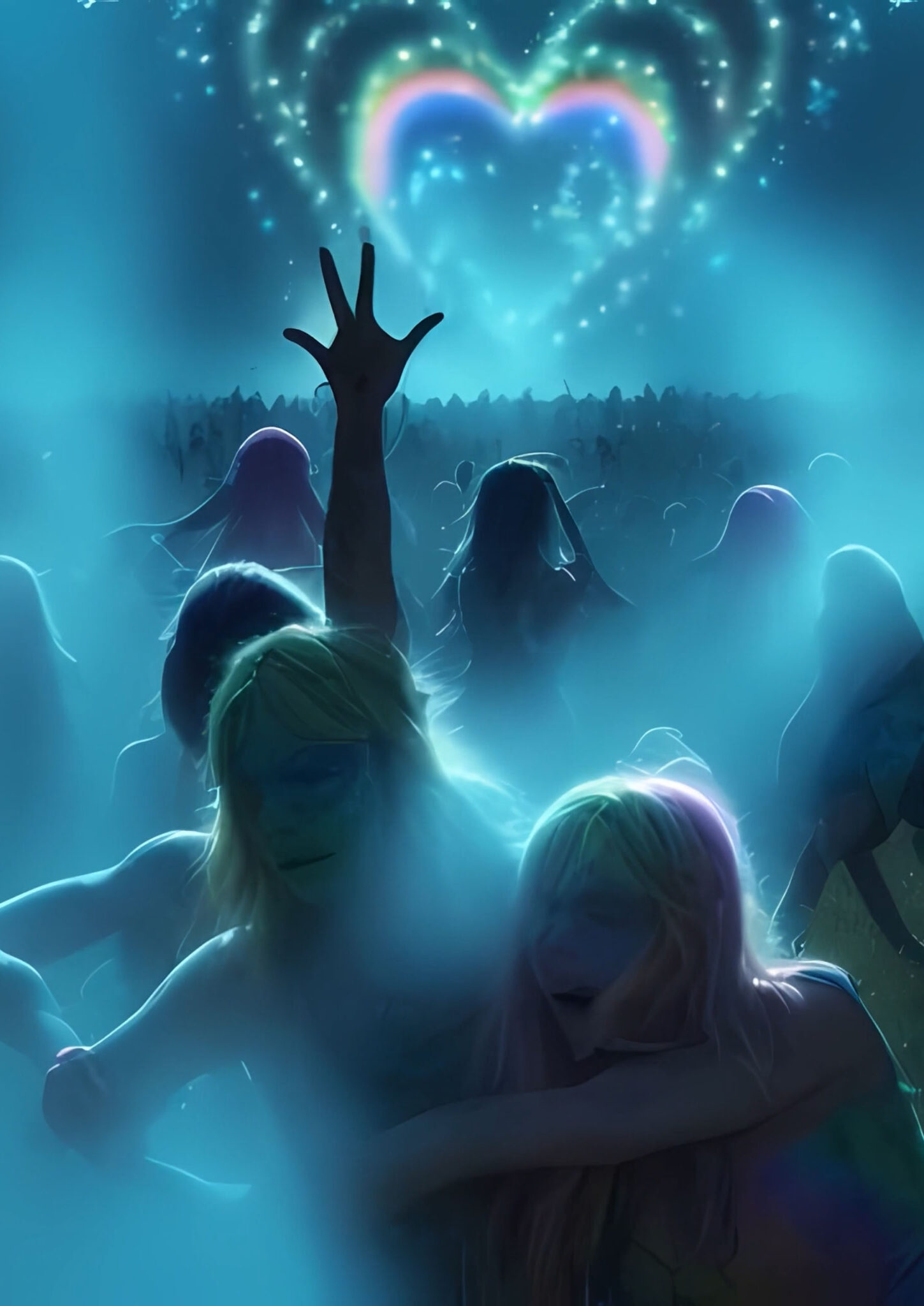
QUBIT AI: Dennis Schöneberg
N-DRA
FILE 2024 | Interator – Sound Synthetics
International Electronic Language Festival
Dennis Schöneberg – N-DRA – Germany
Created during the pandemic, N-DRA is a video that explores the nostalgia of pre-pandemic times. Through a dreamlike and psychedelic journey through the artist’s memories, it reflects feelings of loneliness, isolation and the desire for connection.
Bio
Dennis Schöneberg, German AI artist, data science student and developer of open source AI models, integrates his passion for electronic music into his creative endeavors. Merging art with technology, he explores the synergy between creativity and artificial intelligence.
Credits
Music: N-DRA by Ricardo Villalobos

QUBIT AI: Dennis Schöneberg
Bodydub
FILE 2024 | Interator – Sound Synthetics
International Electronic Language Festival
Dennis Schöneberg – Bodydub – Germany
This video experiment combines music properties with AI generation settings to create a unique audiovisual experience. The synthesizer works as a control instrument for movement in the 3D space of the video.
Bio
Dennis Schöneberg, German AI artist, data science student and developer of open source AI models, integrates his passion for electronic music into his creative endeavors. Merging art with technology, he explores the synergy between creativity and artificial intelligence.
Credits
Music: Bodydub (Bangkok Impact Remix) by Unit4

QUBIT AI: FILE QUANTUM WORKSHOP 2024 – São Paulo – Art and Technology
FILE 2024
QUBIT AI | quantum & synthetic ai
Electronic Language International Festival
July 3rd to August 25th
Tuesday to Sunday, 10am – 8pm
FIESP Cultural Center
Design: André Lenz
Image: Iskarioto Dystopian AI Films – Athena
QUBIT AI
In its 25 years of existence, the International Electronic Language Festival (FILE) is an internationally renowned Brazilian project that since 2000 has explored the intersection between art and technology. With more than two decades of history, the festival stands out for fostering exhibition spaces and debate about artistic innovations driven by disruptive and innovative technologies, inviting the public to get involved with experimental forms of art that challenge the boundaries of conventionality. Currently, two of these technologies stand out in the contemporary scenario: the accelerated development of quantum computing and artificial intelligence corroborated by synthetic data.
Quantum computing, an emerging revolution in the technological field, offers a new range of creative possibilities for contemporary artists. This new era allows the exploration of unprecedented frontiers through a new computational format that consists mainly of quantum superposition and entanglement, a new field of exploration for synthetic computer science, as well as for the arts in general; on the other hand, artificial intelligence, fueled by synthetic data, offers artists a new way of making and understanding art, opening up space for new forms, concepts and artistic expressions.
Entitled QUBIT AI, the exhibition delves into this unexplored territory presenting a selection of works of art resulting from the connection between artistic creation and technology, proposing a theoretical reflection on what the interrelationship between quantum computers and synthetic artificial intelligence will be.
Visitors will be invited to experience immersive installations, experimental videos, digital sculptures and other forms of interactive art, which intertwine reality and imagination. The exhibition encourages reflections on the influence of technology on art and contemporary society, while at the same time providing an environment to compare already established technological arts (analog and digital) with the possible futures of art in the synthetic era, enhanced by quantum computing. The QUBIT AI exhibition at FILE SP 2024 transcends the mere presentation of works of art; it is a journey to the limits of human creativity, driven by the convergence of art, science and technology.
Ricardo Barreto and Paula Perissinotto
co-organizers and curators of FILE
International Electronic Language Festival

QUBIT AI: FILE OPENING LECTURE 2024 – São Paulo – Art and Technology
FILE 2024
QUBIT AI | quantum & synthetic ai
Electronic Language International Festival
July 3rd to August 25th
Tuesday to Sunday, 10am – 8pm
FIESP Cultural Center
Design: André Lenz
Image: Iskarioto Dystopian AI Films – Athena
QUBIT AI
In its 25 years of existence, the International Electronic Language Festival (FILE) is an internationally renowned Brazilian project that since 2000 has explored the intersection between art and technology. With more than two decades of history, the festival stands out for fostering exhibition spaces and debate about artistic innovations driven by disruptive and innovative technologies, inviting the public to get involved with experimental forms of art that challenge the boundaries of conventionality. Currently, two of these technologies stand out in the contemporary scenario: the accelerated development of quantum computing and artificial intelligence corroborated by synthetic data.
Quantum computing, an emerging revolution in the technological field, offers a new range of creative possibilities for contemporary artists. This new era allows the exploration of unprecedented frontiers through a new computational format that consists mainly of quantum superposition and entanglement, a new field of exploration for synthetic computer science, as well as for the arts in general; on the other hand, artificial intelligence, fueled by synthetic data, offers artists a new way of making and understanding art, opening up space for new forms, concepts and artistic expressions.
Entitled QUBIT AI, the exhibition delves into this unexplored territory presenting a selection of works of art resulting from the connection between artistic creation and technology, proposing a theoretical reflection on what the interrelationship between quantum computers and synthetic artificial intelligence will be.
Visitors will be invited to experience immersive installations, experimental videos, digital sculptures and other forms of interactive art, which intertwine reality and imagination. The exhibition encourages reflections on the influence of technology on art and contemporary society, while at the same time providing an environment to compare already established technological arts (analog and digital) with the possible futures of art in the synthetic era, enhanced by quantum computing. The QUBIT AI exhibition at FILE SP 2024 transcends the mere presentation of works of art; it is a journey to the limits of human creativity, driven by the convergence of art, science and technology.
Ricardo Barreto and Paula Perissinotto
co-organizers and curators of FILE
International Electronic Language Festival

FILE 2024 – Call for Entries
The Call for Entries to participate in FILE – Electronic Language International Festival’s projects in 2024 is now open. The festival seeks original artworks in Art and Technology, by Brazilian and international artists. Registration remains open until February 10th. Access the registration form.
FILE is a non-profit cultural organization that has propagated creation and experimentation in Art and Technology through exhibitions, events and publications over 23 years. This call opens up the opportunity to participate in the 23rd. Edition of the Electronic Language International Festival, which is scheduled to take place at the FIESP Cultural Center, in São Paulo. The selected projects will also be able to collaborate in parallel events in different states in Brazil.
Using the registration form, it is possible to send interactive installations, sound art, video art, robotics, animations, CGI videos, virtual realities, augmented realities, mobile art, games, gifs, internet art, lectures and workshops, among others. To participate in the LED SHOW programm, exhibited annually at the FIESP Digital Art Gallery, register using the form. Sign up!

SHAI LANGEN
Jo Goes Hunting – Run Away
Amsterdam material designer Shai Langen made sculptural headpieces and covered models in hand-painted patterns for Jo Goes Hunting’s Run Away music video.Langen was approached by the Dutch artist’s manager with a brief for “something less conventional”, and was given complete artistic freedom in his approach.The video opens with a close up of a gleaming paint-covered black and white surface, which is gradually shown to be the form of a person.

CASEY REAS
KTTV
This documentation video captures a few minutes of a continuous, generative collage. The source for the collage is one hour of edited signals captured from KTTV (198 – 204 MHz @ 34°13′29″N, 118°3′47″W) in August 2015.
The sound was created by Philip Rugo
.
KTTV Cette vidéo de documentation capture quelques minutes d’un collage continu et génératif. La source du collage est une heure de signaux édités capturés par KTTV (198 – 204 MHz @ 34°13′29″N, 118°3′47″W) en août 2015.
Le son a été créé par Philip Rugo

Frederik Heyman
CEREMONIAL FORMALITY
Frederik Heyman’s work is a balancing act incorporating multiple media – including video, installations and photogaphy – often in a digitally altered environment. In his work, Heyman explores memory and duration, using photogrammetry and 3D scanning to depict and represent the passage of time. The hallmarks of Heyman’s work are mechanical and technological: wires, wheels, scrolling LED marquees, metal frames, clamps, industrial lights, screens and cameras. Bodies–as opposed to humans–are subject to unusual dynamics with these technological trappings. In Ceremonial Formality (2020) a contortionist is encased in a metal cage while a spectator, hooked up to wires, looks on.
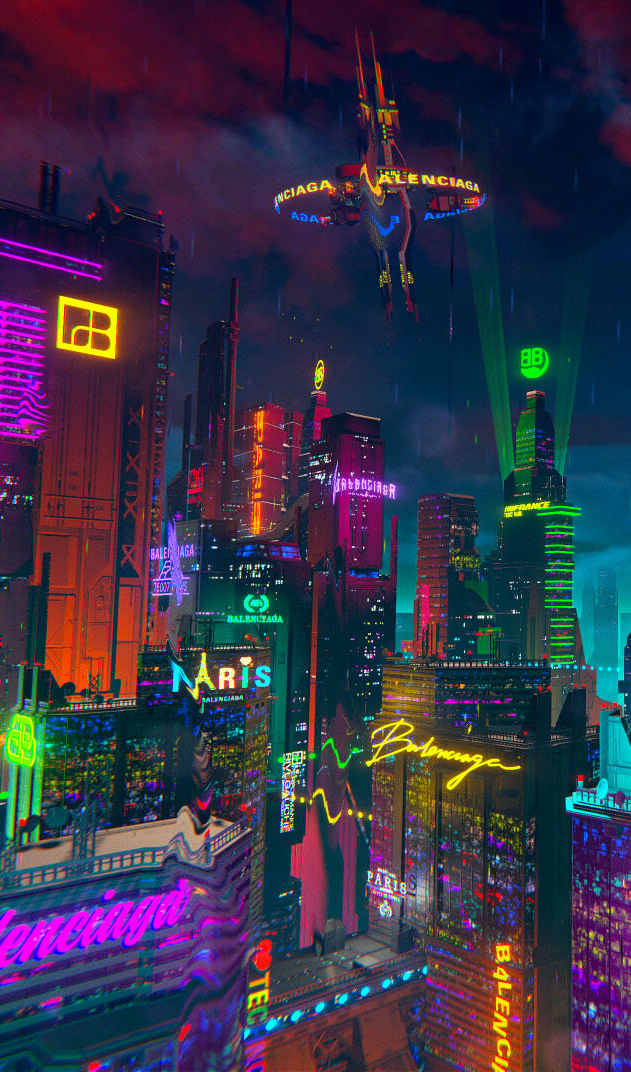
tabor robak
balenciaga collaboration
A 25 minute video loop with previously unreleased tracks by DJ Hell, made in collaboration with Balenciaga.
Here is a dramatic tension in his work between the real and the imagined in his use of often-appropriated digital objects to create virtual landscapes, which frequently contain elements – animals, machines, fragments of videogames – that are recognisable from our day to day life. This creates a symbiotic relationship between the digital and the real. In a very real way digital space has now become an intangible reality. The worlds built by Robak have a distinctly cinematic sensibility that hyperbolises the shine and dramatic effects of 3D rendered animation. The aesthetic of his work is supremely important, drawing the viewer into a truly alluring, indulgent and strangely gratifying environment. There is a further challenge to the void between high-art and the worlds of 3D animation and gaming, in the intersection between depiction and simulation. This can be partially attributed to the vernacular of advertising Robak is so proficient at utilising.

VR/URBAN
SMS Slingshot
file festival
SMSlingshot
The SMSlingshot est un lance-pierre numérique qui envoie des SMS colorés sur les murs, telles des billes de paint-ball. La recette est simple, ou presque : un vidéo projecteur, un lance-pierre en bois muni d’un pointeur laser et une radio à Ultra Haute Fréquence. L’utilisateur utilise le clavier du lance-pierre pour écrire son message, vise un mur et le bombarde. Son SMS s’inscrit dans une tâche de peinture colorée.
.
SMSlingshot
Der SMSlingshot ist eine digitale Schleuder, die wie Paintballs bunte Textnachrichten an Wände schickt. Das Rezept ist einfach oder fast: ein Videoprojektor, eine Holzschleuder mit Laserpointer und ein Ultrahochfrequenz-Radio. Der Nutzer schreibt mit der Schleuder-Tastatur seine Nachricht, zielt auf eine Wand und bombardiert diese. Ihre Textnachricht ist Teil einer bunten Lackierung.
.
SMSlingshot
SMSlingshot è una fionda digitale che invia messaggi di testo colorati ai muri come palline di vernice. La ricetta è semplice, o quasi: un videoproiettore, una fionda di legno con puntatore laser e una radio Ultra High Frequency. L’utente utilizza la tastiera a fionda per scrivere il proprio messaggio, mira a un muro e lo bombarda. Il suo messaggio di testo fa parte di un lavoro di pittura colorato.

Pam Tanowitz
“Gustave Le Gray No. 1”
In 2019, Ballet Across America was put together with the inspiration of women’s leadership in ballet and dance. To mark the celebration, the Center commissioned choreographer Pam Tanowitz to create a world premiere work for the week’s two participating companies, Dance Theatre of Harlem and Miami City Ballet; both are companies led by visionary women – Virginia Johnson at DTH and Lourdes Lopez in Miami.
Tanowitz set the work on two dancers from each company, with a pianist on stage playing a solo work by the composer Caroline Shaw. The piece had its world premiere during Ballet Across America on May 31, 2019. This video captures the premiere performance.
.
Pianist: Sylvia Jung
Dancers: Renan Cerdeiro, Lauren Fadeley, Anthony Santos and Stephanie Rae Williams

Sara Sadik
Ultimate Vatos
Les vidéos, performances, installations et photographies de Sara Sadik prennent la forme de mangas, de jeux vidéo, de docu-fictions ainsi que de films d’animation CGI. Ce faisant, l’artiste aux racines maroco-algériennes explore les manifestations de ce qu’elle appelle « Beurcore« – la culture des jeunes qui a émergé parmi les membres de la classe ouvrière de la diaspora nord-africaine. Beurcore définit à la fois une identité hybride et un mouvement collectif constitué à travers la musique comme le rap et le hip-hop, la langue, la mode, des symboles spécifiques et les médias sociaux.
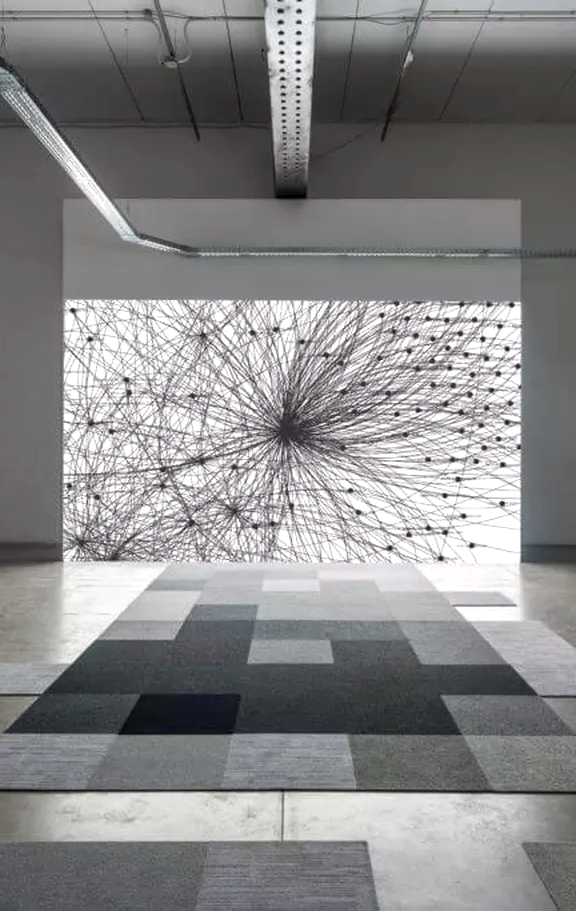
Eva Mattes + Franco Mattes
My Little Big Data
O ensaio em vídeo de 24 minutos My Little Big Data foi realizado em colaboração com o analista de dados Vladan Joler, a quem os artistas entregaram voluntariamente todos os e-mails trocados nos últimos 13 anos (mais de 70.000 e-mails pessoais enviados e recebidos) e vários meses de histórico de navegação.
O vídeo analisa a enorme riqueza de informação que muitas vezes revela detalhes íntimos da vida privada dos dois artistas, como preferências políticas ou culinárias, processos de trabalho, locais visitados ou locais onde viveram, de forma a criar um retrato de extraindo e examinando esses dados pessoais e metadados.

Bruce Nauman
Nature Morte
Nature Morte focuses on Nauman’s long relationship to his own studio, a variation on his four unique multi-projection videos, Mapping the Studio (2001). Three viewing stations, each consisting of an iPad linked to a wall-sized projection, provide an interactive exploration of the 3D studio space. Only now the artist is absent, and the participant becomes performer as he/she manipulates the large scale video projections on an iPad using touch control. The participant is free to navigate anywhere throughout the space, selecting broad vistas or individual objects. Using a hand-held 3D scanner, Nauman recorded hundreds of images that allow participants to select an object and locate close-up anything found there, and further reorient the image to see an object from above and below, and at times inside-out. The resulting mobility intensifies the experience of the viewer/performer. Presenting a static, but immersive re-creation of his studio space, Nauman’s pieces once again play at the tenuous lines between the body and space, perception and physical material.

MASAKI FUJIHATA
beyond pages
The data projector loads images of a leather bound tome onto a tablet which a light pen activates, animating the objects named in it – stone, apple, door, light, writing. The soundscore immaculately emulates the motion of each against paper, save for the syllabic glyphs of Japanese script, for which a voice pronounces the selected syllable. Stone and apple roll and drag across the page, light illuminates a paper-shaded desklamp; door opens a video door in front of where you read, a naked infant romping, lifesize and laughing, in.

Kuflex Lab
Symbiosis
In the installation area, the human body is augmented with video projected virtual images. Viewer and technology enter a symbiotic relationship and as a result, bring to life wonderful biomorphic creatures. They change constantly – reacting to your every movement and turning into new and unique forms each time. The installation was inspired by the symmetry of living organisms, the structure of exotic insects, and reflections on extraterrestrial life forms.
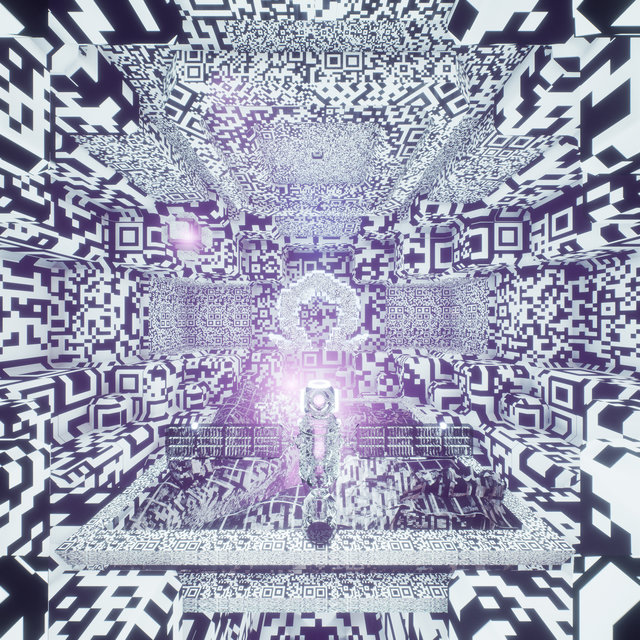
Lawrence Lek
Unreal
Lawrence’s accompanying soundtrack is a delicate lattice; complex, opaque and entirely synthetic. Diva’s yearning vocals, sung in English and Mandarin, cast classical melodies over billowing, intricately arranged songs. Her voice is created with a Vocaloid voice synthesiser, giving it an uncanny feeling. Her confessional lyrics draw empathy from the listener, as she reveals her fears of becoming an irrelevant influencer, obsolete in a machine-driven age.
The lead single ‘ unreal’ is launched with a harrowing video adapted from the film.
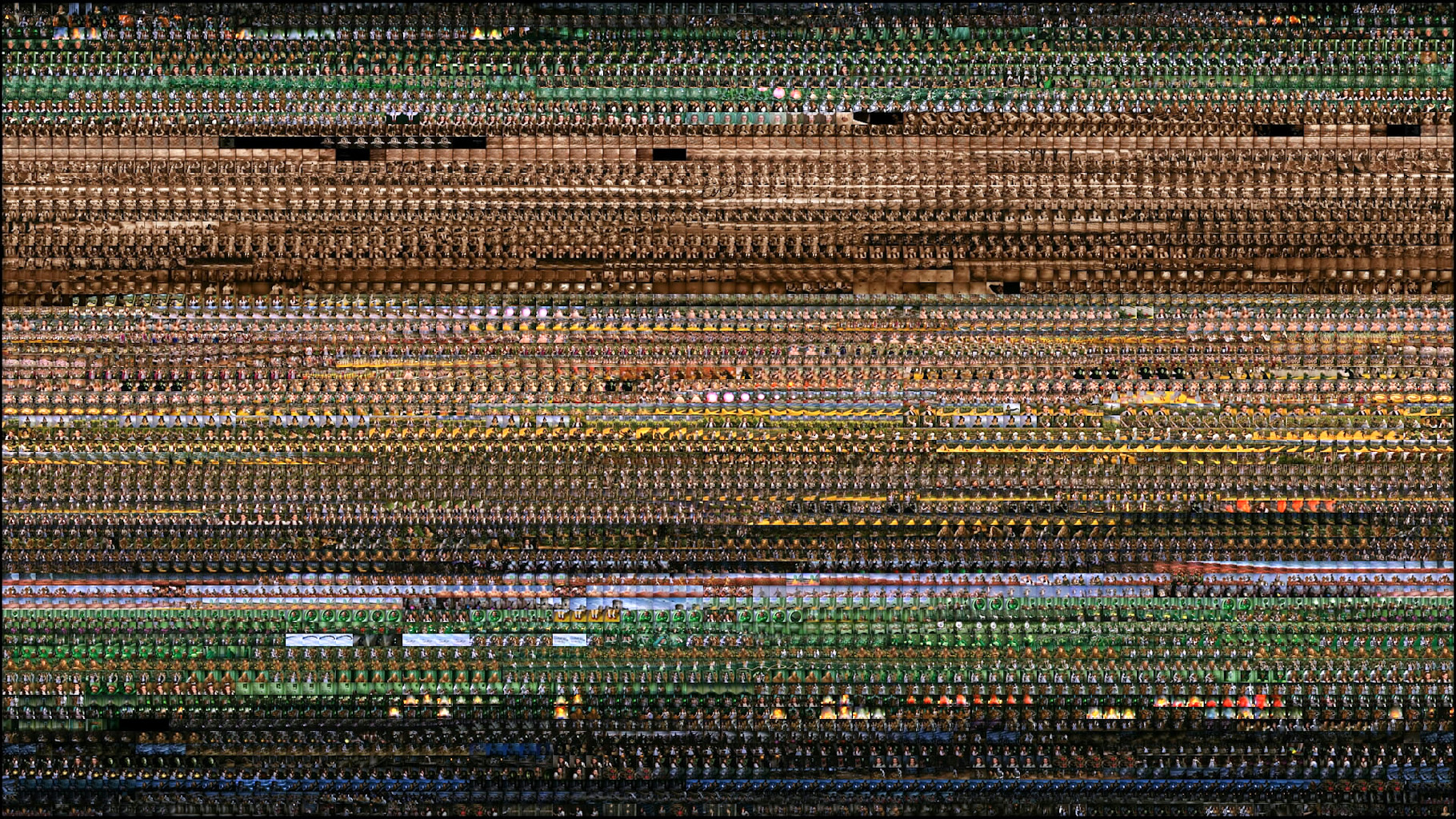
DENNIS NEUSCHAEFER-RUBE
The Wizard of Oz experiment
The Videoinstallation “The Wizard of Oz experiment” by Dennis Neuschaefer-Rube shows the movie „The Wizard of Oz“ 5829 times side by side. The movies are arranged in rows from left to right and time shifted by exactly one second each. The video starts at the top left, with the first second of the film and finishes bottom right with the last second of the film. The projection is in a that repeats every 98 minutes.
A computer voice speaks the whole subtitles of the film „The Wizard of Oz.“ in a 68-minute loop.

Lu Yang
The Great Adventure of Material World
FILE FESTIVAL
The Great Adventure in Material World/Material World Knight is the most adventurous video game artwork that Lu Yang has created. The Great Adventure in Material World/Material World Knight has combined all the protagonists in Lu Yang’s artworks from the past and created an alliance of these heroes. In this video game, the world can be indefinitely explored by players. It has also incorporated several other elements created in various works from the artist before”. Once players enter the video game, they will transform into knights in this Material World. As protagonists of the alliance of heroes in the Material World, they will explore the Universe, absorb energy, be destroyed and achieve rebirth. They will fight all sorts of emotions, desires and eventually with themselves.

Dragan Ilic
Re)Evolution
With the machine programed to draw, the robot becomes a medium for interaction and for “symbiosis” with the artist, creating a kind of “hybrid body” of man and machine, whose nervous system and brain waves administer “software commands” to the robot during the drawing performance. A key actor in the exhibition will be the new model of the KUKA KR 210 robot, that has a multi-functioning performative role: from drawing, experimental dance, music – through the production of industrial sound, and a six channel video projection that documents Ilić’s projects.

John Gerrard
24Western Flag
Trails of smoke form an ever-changing black flag in this video footage created by Irish artist John Gerrard to highlight the threat posed by increasing levels of carbon dioxide in the earth’s atmosphere.

Marjan Moghaddam
Mit 3D-CG in Spielfilmqualität und Motion Capture improvisierter Performance kreiert Marjan Moghaddam seit 2008 filmische und fantastische virtuelle Welten, die von ihren charakteristischen digitalen Körpern bevölkert werden. Diese Körper sind manchmal maschinell, organisch, hybrid oder energiebasiert, als unterbrochene und diskontinuierliche Figuren, die unser hybrides virtuelles und physisches Leben repräsentieren. Diese Szenen und Figuren ähneln filmischen Gemälden mit Videospiel-Ästhetik und Spezialeffekten für das postdigitale Zeitalter.
JEREMY SHAW
Verso Il Riconoscimento Universale
“Shaw presenta Towards Universal Pattern Recognition, una serie di fotografie d’archivio incorniciate sotto acrilico prismatico lavorato su misura. Le opere, che lui chiama sculture ottiche, raffigurano persone in stati trascendenti a cui si accede attraverso la preghiera, la danza, lo yoga e simili. Fungono da anteprima per i video, che vengono proiettati in spazi meticolosamente costruiti, ciascuno con otto sedie da ufficio che si affacciano su un unico schermo “. Diana Hiebert

Kevin Cooley
Fallen Water
Fallen Water explores questions about why humans are drawn to waterfalls and flowing water as a source for renewal. Waterfalls imbue subconscious associations with pristine and healthy drinking water, but what happens when the fountain can no longer renew itself? Is the water no longer pure? Cooley’s choice of subject matter strikes a deep chord with current social consciousness and anxieties about contemporary water usage and the drought crisis faced by the American West. Cooley references Blake’s famous quote from The Marriage of Heaven and Hell as context for the diametric opposites of the current water conundrum: our deep sense of entitlement to and dire dependence on this precious commodity, coupled with a pervasive obliviousness concerning the sources which supply it. As a way to connect with his personal water use, Cooley hiked into the mountains to see firsthand the snowpack (or lack thereof), streams, and aquifers which feed the water sources supplying his Los Angeles home. This multi-channel installation is an amalgamation of videos made over numerous trips to remote locations in the San Gabriel Mountains, the Sierra Nevada Mountains, and locales as far away as the San Juan Mountains in Southwestern Colorado. These disconnected video vignettes coalesce, constructing a large water landscape canvasing the gallery walls and floors – reflecting the disparate and widespread origin of Los Angeles’s drinking water. The colorspace within the videos is inverted, turning the water pink, orange and yellow—channeling an altered vision of water—in which something is definitely amiss: a stark reminder of the current water crisis in the state of California.
.

Universal Everything
Tetrachromia 2-0 – Seoul
Tetrachromia ist eine Serie von Bewegtbild-Kunstwerken, die die Erforschung der digitalen Repräsentation der Natur durch das Studio fortsetzt. Die Videoserie hat ihren Namen von dem wissenschaftlichen Begriff, der verwendet wird, um die erweiterte Farbpalette zu beschreiben, die jenseits der normalen menschlichen Wahrnehmung existiert. Diese digitalen Naturfilme sind von dem Wissen inspiriert, dass Vögel Farben in einem breiteren Spektrum sehen können, was dazu führt, dass scheinbar grüne Pflanzen von lebendigen Mustern und Schattierungen durchdrungen werden.
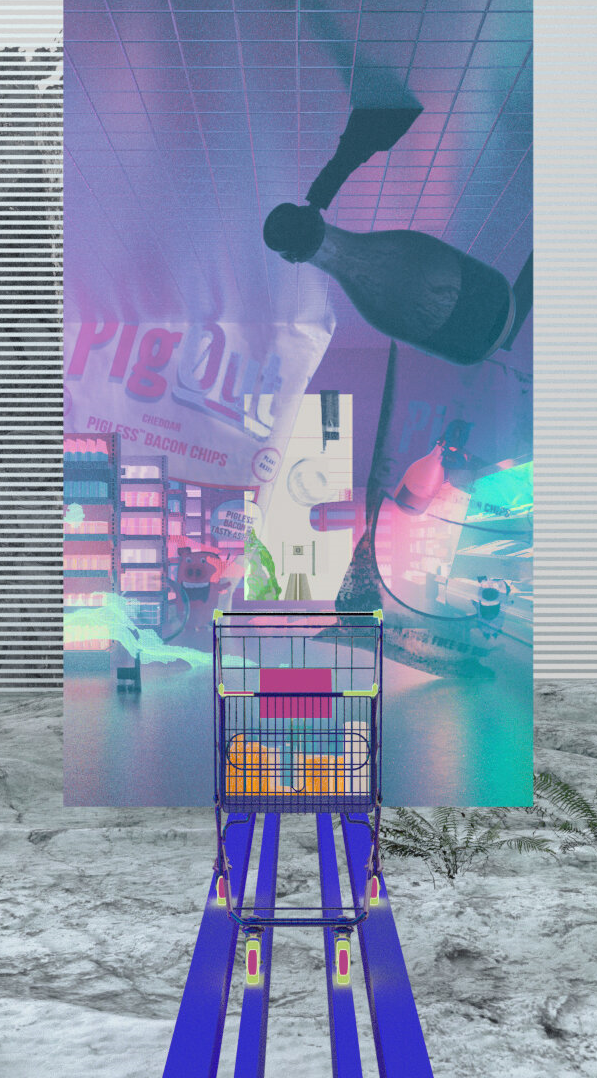
Nix Liu Xin
Three Supermarkets
Three Supermarkets is an infinite loop film with a shopping cart riding across multiple coexisting fictional supermarkets. As the first episode of the Phygital Supermarket Trilogy, this film explores the hybrid compositing of the emerging physical and digital media and techniques. The production process of this film uses industrial-grade six-axis Staubli robot arm as shooting equipment, green screen shooting, volumetric video capture, photogrammetry, Cinema 4D Mograph, Redshift shading & rendering, 2D/3D compositing, and other custom build techniques and workflows. Familiar but neglected objects, such as apples and snack bags, were scanned as either static models or animated model sequences from the physical world to the digital space.

Olga Klimovitskaya
Escape to virtuality
Con el objetivo de sentirme libre de la objetivación, estaba tratando de escapar a la realidad digital para alienar el cuerpo de la mujer constituida durante la exposición APXIV-24 que participó en la Bienal de Arte Joven de Moscú. En colaboración con Yanzi. Montaje de video por Lika Gomiashvili. Música de Olga Klimovitskaya.
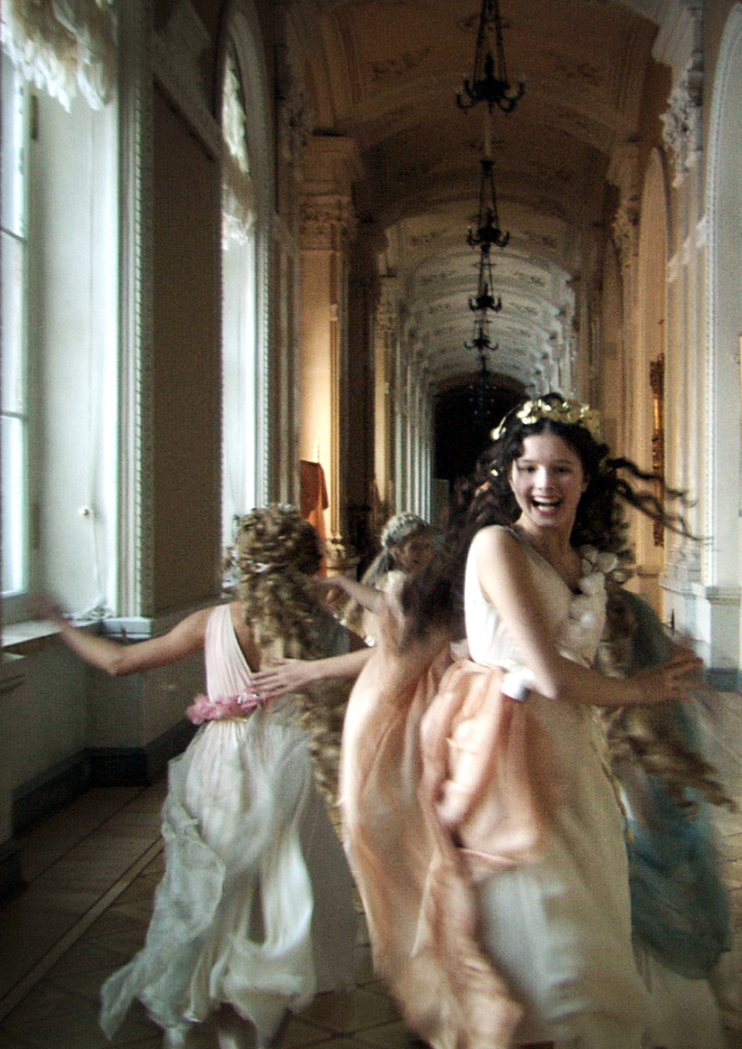
Aleksandr Sokurov
ألكسندر سوكوروف
亚历山大·索科洛夫
Александр Сокуров
Russian Ark
“Alexander Sokurov’s desire to film The Russian Arch in one continuous take required extraordinary technical solutions. Since it is physically impossible to shoot more than twelve minutes of conventional film, we had to shoot on video. However, it was only the relatively recent arrival of 24p high definition compact cameras that offered the visual quality and the ability to make this film for theaters, including transferring the digital image to a 35mm negative.With the help of German specialists a complex portable platform was designed to meet the demands of the scenario which included precise architectural plans, highlighting the distance of 1300 meters covered by the course of the action. It was decided that the only way to move the camera would be to use a steadycam, although we could not be sure until after the final image that such a long steadycam shot would be possible, given the physical performance. extreme demanded from the German cinematographer, Tilman Büttner. After months of rehearsals, the 867 actors and extras, the three “live” orchestras all had to know their position and precise roles “. It’s just amazing.
cinema full

